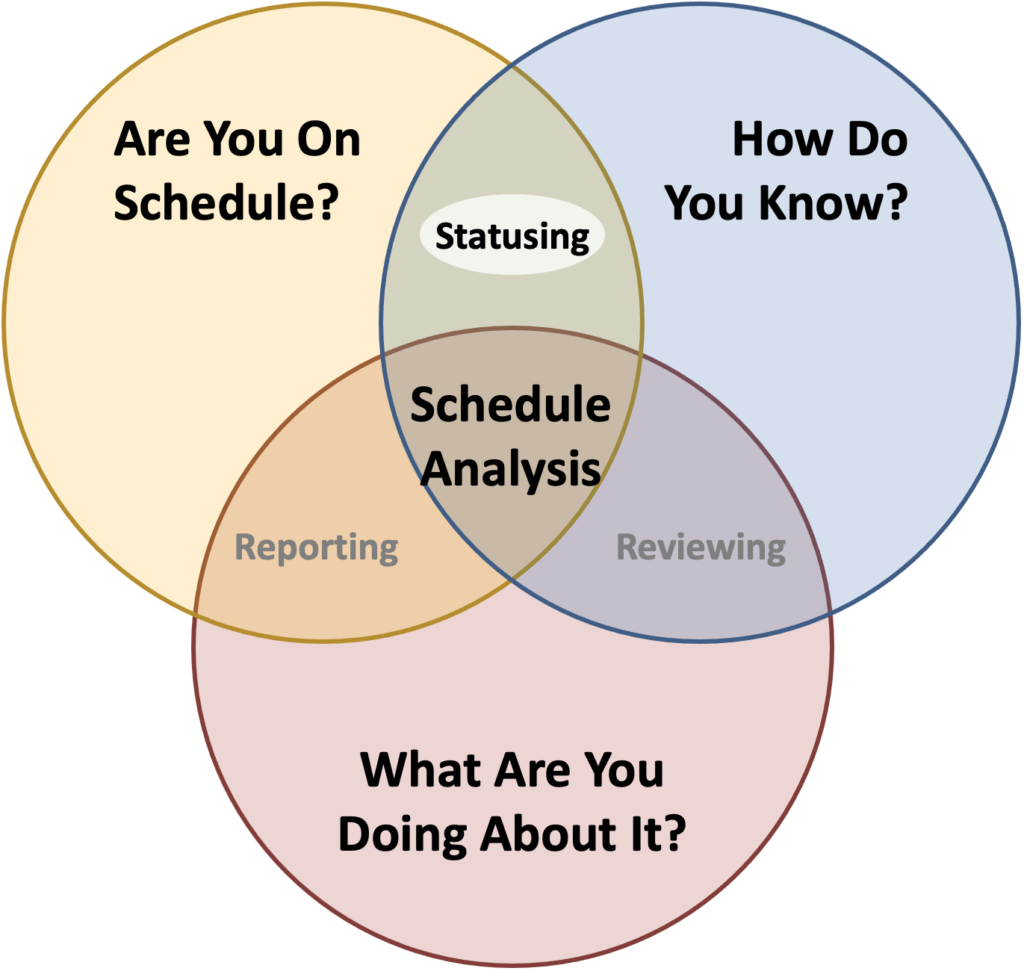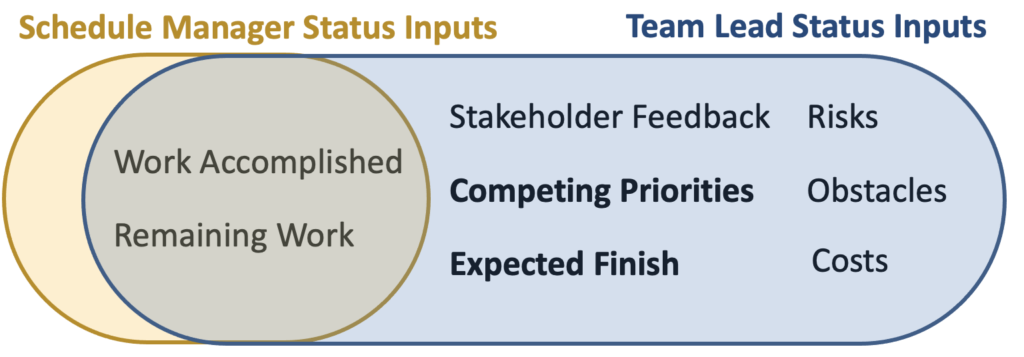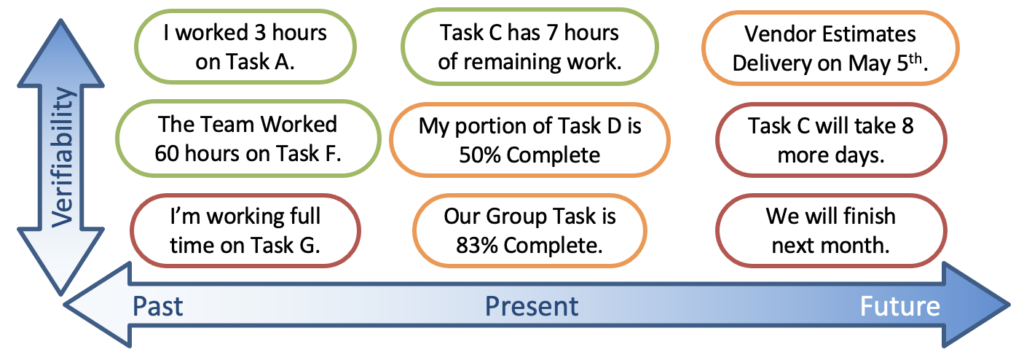“How are things going?” Organizations tackle this question about ongoing work using all manner of scrums, balance sheets, progress reports, and sitreps. Even children explore their mid-level manager potential with the time-honored road trip question.
In many ways, statusing is schedule analysis’s most essential step. Without an up-to-date schedule, credible analysis of the project’s future becomes impossible. This article will frame statusing’s role in schedule analysis and discuss the best intel to collect.

Verifiable Status Updates
“Updating the schedule” can mean many things. It can refer to adding new work, revising schedule logic, implementing a newly approved baseline change, or shifting projected finish dates. When updating the schedule refers to recording accomplished work, that process is called statusing.

Team members have a plethora of data they could choose to share when providing status updates to the schedule. The most desirable status updates are those which are highly verifiable. Vetting status updates is uncommon. Schedule Managers shouldn’t become auditors. But the fact that a status update can be verified, or refuted, makes the data much more valuable and usually much more integrable into the schedule. A status update’s verifiability can be measured in two ways. First is quantifiability. For example, it is far more valuable to know that four of the six requirement documents were written in the past two weeks then it is to know that the requirements are “mostly done”.
The second measure is individuality. Collective status updates tend to smooth over the rough spots, or lose details in translation, like a game of “Telephone”. As much as possible, it is best to collect status updates from first hand sources. Team members may balk at this concept. Why would team members want twice the busywork of keeping separate managers up to date?

But the characterization is misleading. Schedule Managers need only a fraction of the intel that team leads need. What’s more, a well informed the Schedule Manager can furnish team leads and team members with a more complete picture of competing priorities and expected finish dates, then project teams could figure out on their own.

The other advantage to obtaining low level status updates is that the status updates are unvarnished. Context is critical in schedule reporting. But the best quality status data is context free. Team members reporting to their boss inevitably have performance appraisals in mind. Collecting status updates directly from team members makes it more likely that updates will be true. And it lowers the likelihood of team leads papering over cracks in performance.

Postdictive Statusing
Forward looking status updates are predictive. “I will be done in three days.” Status updates based on history are postdictive. “I worked four hours on the hardware prototype.” Figure 14 depicts a few example status updates gauged by their verifiability, and the direction in time which these status updates take.

Estimating work is universally difficult, and inaccurate. An entire industry has arisen to improve estimation quality for those willing to invest the time. But the fastest practical way to reduce human estimation error is to focus on the past. People are far more comfortable and more accurate at estimating what they’ve just done, versus what they have left to do.
That said, there is some value in estimating remaining work. Figure 15 depicts a task which was initially expected to take fifty hours over three weeks. The team member providing status on this task reports that they worked 20 hours the first week. That is enough information for the Schedule Manager to update the schedule file.

But suppose the team member also reports that they estimate they need thirty-five hours to finish the task; five more hours than originally anticipated. This is valuable intel. But how do we process its effects on the schedule? Remember that schedule statusing is deliberately not concerned with consequences. Analyzing whether the project can still be done on time or within budget1As a rule, schedules and Schedule Managers are not concerned with financial budgets. However, Schedule Managers and team leads should know how many hours of labor the project team has budgeted, and the impact of exceeding the budgeted hours. comes later.
There is good reason to believe the revised estimate is more accurate. The new estimate has been made with hindsight’s benefit of having worked on the task. Second, the team member is estimating a smaller amount of work. Smaller estimates are always easier to make.
Note however is that the remaining work estimate is only valuable because we can vet the estimated remaining work against the reported progress. Suppose the team member had reported that they worked only five hours on the task. Suppose they reported working forty-five hours. In either extreme, the remaining work estimate of thirty-five hours would warrant scrutiny. What made the task significantly easier or harder than we first thought?
What if that the team member only reports that there are thirty-five hours of remaining work on the task. Now we have more questions than answers. Did they start the task? Did they struggle all week to get less than halfway done? Forward looking status updates don’t provide enough information unless they are anchored to the past.
Next Steps
This article introduced the idea that a status update is more valuable when it is quantifiable. Schedule Statusing Principles will discuss in depth what quantifications are most valuable to the statusing process, and how status updates gain collective importance.
